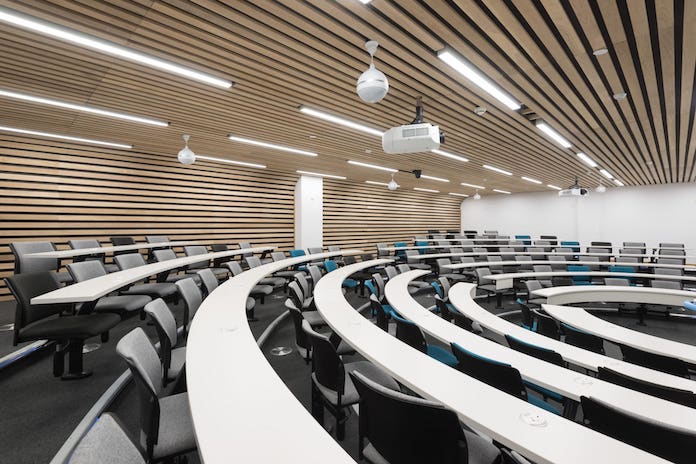
A research project by ISG, Stride Treglown and client University of the West of England identified a new data-driven approach to post occupancy studies, writes Zoe Price
The dearth of high-quality post occupancy data is a subject that many have ruminated on before. How can we move forward as an industry and deliver better for our clients, if we don’t get around to collecting and analysing how buildings are performing once their occupants move in?
However, we may be at a crossroads, where the collision of covid-19, 2050 net zero targets, pioneering organisations and motivated clients force this issue into the light like never before.
The humble domestic smart meter has shown that it is relatively easy to monitor energy consumption to help us make better informed choices. But we can do so much more for our clients, as a recent academic research project that ISG participated in, alongside architect Stride Treglown and our client the University of the West of England (UWE), has demonstrated.
This pioneering original research project aimed to capture data via an entirely novel approach – a sensory post occupancy evaluation of the recently constructed Bristol Business School. Users of the new building – students, teaching staff and visitors – were all invited to record their experiences of the new space visually, through smart phone images and brief captions. Image-led discussion groups were also convened to provide user-centric qualitative data.
This unique insight into the direct experiences of different user groups will undoubtedly drive change within design practices and clients, but from a construction perspective it led us to identify the opportunity to introduce a new integrator role in the post occupancy period that we tentatively call the ‘building culturist’. This individual could hold the key to revolutionising post occupancy outcomes – especially in this constant state of flux that we now call our ‘new normal’.
The study found that while many design features were welcomed and celebrated, other assumptions didn’t actually play out in reality once users occupied the new building.
A great example was the use of extensive glazed partitions to enable light to flood through the space. Users commented on feeling like they were in a goldfish bowl, constantly being watched, and images capturing homemade privacy screening showed a divergence from design concept to usability.
Enter our building culturalist. This individual is not only responsible for monitoring, reporting and resolving operational performance and efficiency issues within the building, through smart monitoring tools, but also represents the experiential viewpoint of users. Our post occupancy study is very easily replicated and provides powerful insights that are not always captured by standard survey techniques. This latter point must not be underestimated in the ultimate analysis of a successful building and is arguably even more crucial in these times when facilities need to flex and adapt like never before.
Collecting and analysing operational data is a simple validation to demonstrate that we have delivered what we said we would.
We take this to the next level when we look at user experience, and why wouldn’t we want to know that users are surprised and delighted by the spaces we’ve collectively created. More importantly, why not arm our clients with the tools and job description for our building culturalist – an individual at the sensory heart of spaces, quickly identifying and rectifying issues that impact on usability and productivity?
Our clients are reaching out to us for answers, especially as spatial considerations are at the forefront of this new pandemic era. Thinking laterally and seeing the bigger picture is a way that we can always remain relevant.
Zoe Price is ISG’s chief operating officer for UK construction









